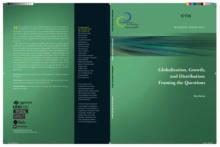Land Library
Bem-vindo à Biblioteca do Land Portal. Explore nossa vasta coleção de recursos de acesso aberto (mais de 74.000), incluindo relatórios, artigos de revistas científicas, trabalhos de pesquisa, publicações revisadas por pares, documentos jurídicos, vídeos e muito mais.
/ library resources
Showing items 1 through 9 of 47.These papers present NGOs’ views regarding the current situation of Cambodia’s development, with the aim of providing constructive feedback on progress made on the implementation of the National Strategic Development Plan and Joint Monitoring Indicators since the meeting of the Cambodia Developme
This document aims to explain the land case involving the Dey Krahorm community in Phnom Penh, Cambodia. It was compiled as an advocacy and legal tool to support the families who continue to live on the site and to challenge the legality of the contract which threatens to cost them their land.
This paper draws on case studies from three communities in Ratanakiri to illustrate
This report analyzes the conflict resolution mechanisms among pastoralist societies in northern Kenya who have a long history of conflict but were by and large not involved in recent hostilities.
South Africa's growth experience provides an example of how contrasting growth trends long-term decline followed by improved growth pivot around political change, in this case a transition to democracy.
The real exchange rate was not at the center of the first generation of neoclassical growth models, nor was it prominent among the policy prescriptions that flowed from those models. Recent analyses, in contrast, have paid it more attention.
After decades of war, with a dilapidated infrastructure and millions of people dead, wounded or displaced, Vietnam could have been considered a hopeless case in economic development. Yet, it is now about to enter the ranks of middle-income countries. The obvious question is: How did this happen?
In the last two decades, across a range of countries high growth rates have reduced poverty but have been accompanied by rising inequality.
Botswana represents one of the few development success stories in Sub-Saharan Africa. Real Gross Domestic Product (GDP) growth averaged almost 9 percent between 1960 and 2005, far above the Sub-Saharan Africa average.







